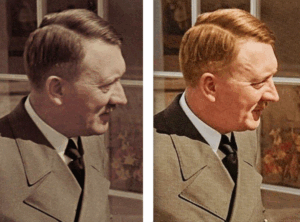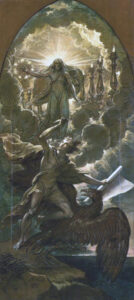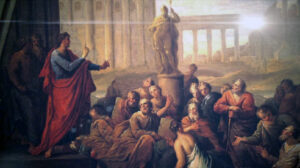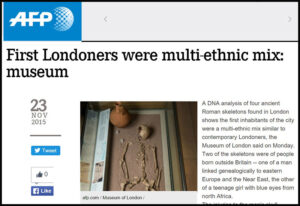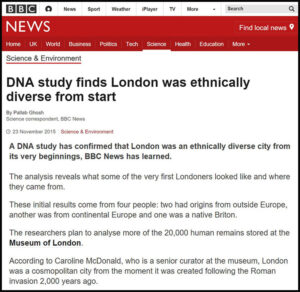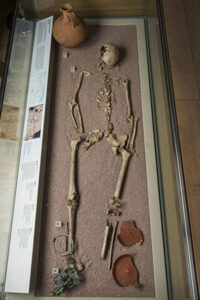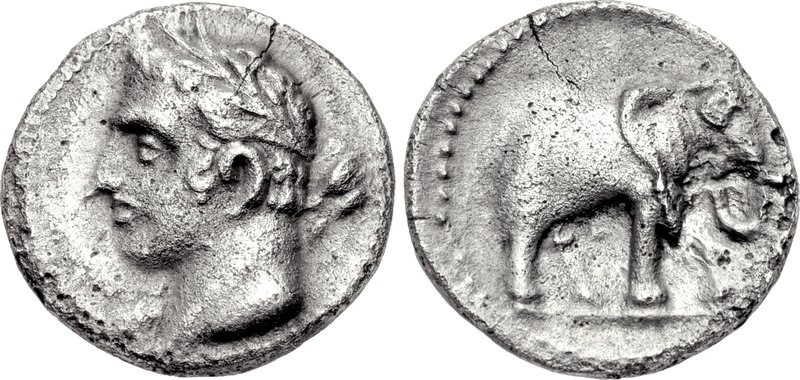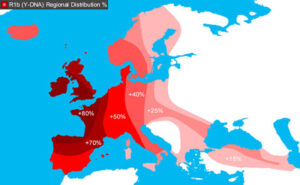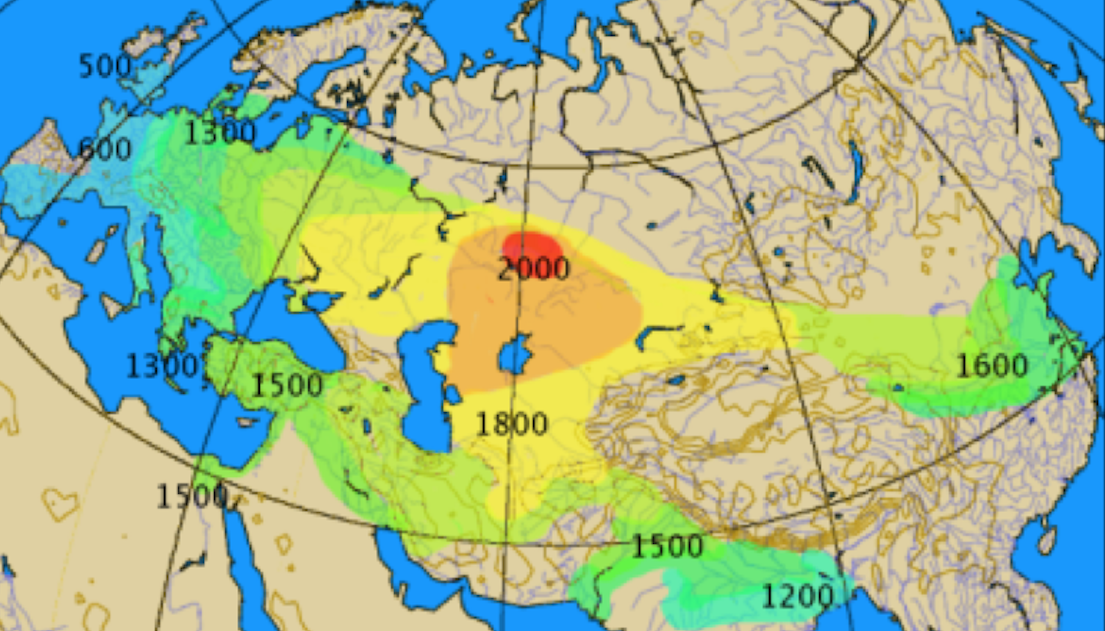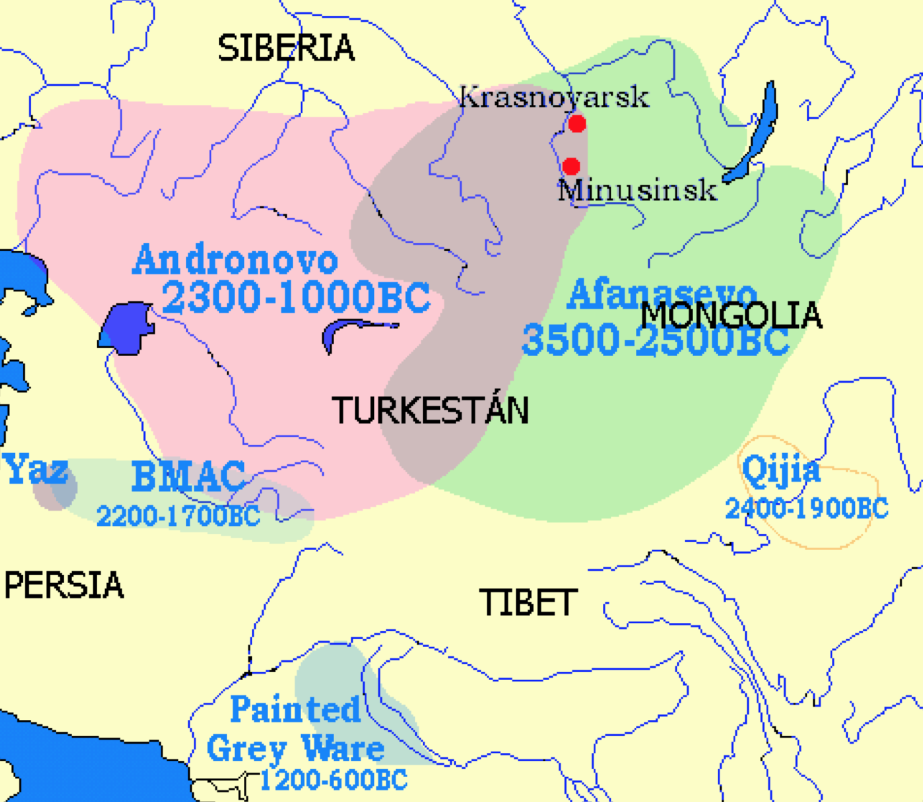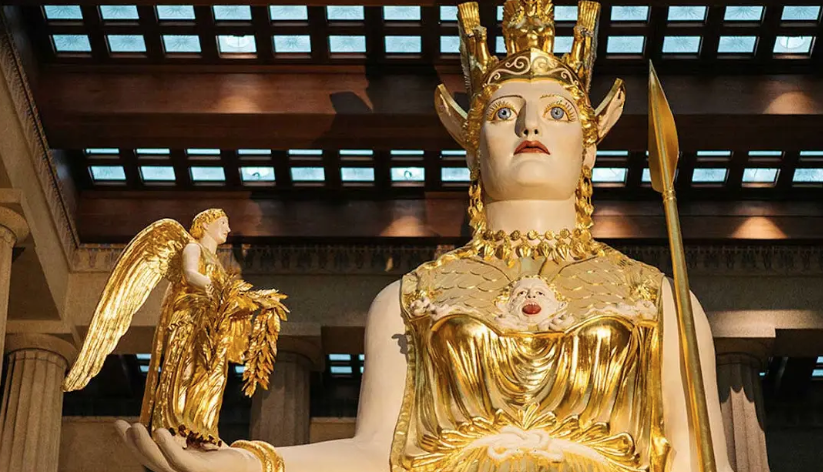was the colour of Hitler’s hair?
by Heinrich
I’m in full agreement with Mauricio. Even if the Führer were a black-haired “Mediterranean” I would still venerate him as the Greatest Man. His courage, gravitas, persistence, eloquence, wisdom, nobility and kindness were exemplary of a specimen of the highest calibre, and once you get to grips with racial psychology you realize that all those virtuous traits could only materialize in a man of pure Nordic blood.
Every time when someone implied that there is a self-contradiction in Hitler being a Nordicist with brunet hair I always responded that hair colour is just one of many racial characteristics of an individual, so he would still be mainly Nordic even if he had dark hair, and that this would only show that you can support the cause of perfection selflessly despite yourself not being as perfect.
As most people I too found that his personality and Weltanschauung are far more important than his physical features, but after accidentally finding out the truth I cannot sit anymore and watch baseless lies being spread about him often driven by malicious mockery.
So let’s look at the actual evidence.
Black-white photos aren’t of any use in determining the colour of his hair, because everything except for the fairest hair appears dark on them. But in determining forms and shapes they are helpful, and they tell us something really important.
If we look closely we can observe he used some kind of hair-dressing product to shape his hairstyle. You cannot see the look he had naturally. These products were at the time oil based with wax, and were known to darken blond hair with several shades.
When reading Hans F. K. Gunther’s Rassenkunde des deutschen Volkes I was pleased to see that he makes very similar observations when discussing Nordic hair, namely that 1) Any other shade of blond that isn’t the lightest will appear dark on the photos of that time, and 2) Oily or wet blond hair will appear dark.
This also explains why we don’t have many more testimonials describing him as blond: it didn’t appear as striking due to the side effects of the hair-dressing product. The only person we know of describing him as blond is Lothrop Stoddard, a eugenicist who probably had been used to paying special attention to details and precision:
There are certain details of Hitler’s appearance which one cannot surmise from photographs. His complexion is medium, with blond-brown hair of neutral shade which shows no signs of grey.
Another piece of real, and undisputable evidence is a painting by Heinrich Knirr who is the only artist ever to paint Hitler from life. He also painted photocopies of course, but one painting we know with 100 per cent accuracy not being a photocopy and made in excellent light conditions is Der Führer (1937). He painted two examples of this. One was brought to London by J. von Ribbentrop and is now at the British imperial war museum. It shows him with light to medium blond hair, with the hair dressing product on!
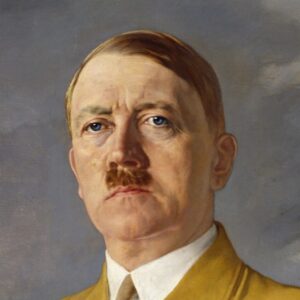 The other version of the painting was exhibited at the Grosse Deutsche Kunstausstellung that year, and had been kept in Germany, so it ended up destroyed in the war and there is only later colourizations of it circulating on the internet:
The other version of the painting was exhibited at the Grosse Deutsche Kunstausstellung that year, and had been kept in Germany, so it ended up destroyed in the war and there is only later colourizations of it circulating on the internet:
There is no trace [!] of the other version that had been displayed at the 1937 great German art exhibition. It was presumably wrecked by bombs, looted or destroyed by victorious allied troops. —The Art Newspaper
The version kept in Germany had been black-and-white photographed before it got destroyed and there is a colourized version circulating of it on the internet, his hair being colourized brown of course. I have seen it being often used as a counterargument so many times. So it is very important to emphasize: it’s a colourized version of a black-and-white photo. This version of the portrait was never even captured in colour, so it cannot be used as evidence for his actual colouring.
 Somebody also showed me a few strands of hair from his hairbrush, sold at an auction. Curiously, the hairs were also blond. We should in general be cautious with items from auctions, but because they corroborate the other two pieces of evidence we have, I think it’s highly probable that they are real. And if we also consider that his actual hair colour is always overlooked by literally all historians, I highly doubt forgers would know about him actually being blond and use blond hair strands in a world where everyone “knows” he had dark hair. If we look really closely these hair strands also look like they have some residual hair-dressing product left on them at certain parts, where they appear thicker, which is consistent with his daily habits.
Somebody also showed me a few strands of hair from his hairbrush, sold at an auction. Curiously, the hairs were also blond. We should in general be cautious with items from auctions, but because they corroborate the other two pieces of evidence we have, I think it’s highly probable that they are real. And if we also consider that his actual hair colour is always overlooked by literally all historians, I highly doubt forgers would know about him actually being blond and use blond hair strands in a world where everyone “knows” he had dark hair. If we look really closely these hair strands also look like they have some residual hair-dressing product left on them at certain parts, where they appear thicker, which is consistent with his daily habits.
What about colour photographs?
Colour photography back then was still in an early stage of development which makes it an unreliable tool for determining colour.
Blond hair consists of mainly yellow with some red/orange undertones. In the context of photography, Yellow light = Red light + Green light. We can see the problems Agfacolor had with its sensitivity to green and red light. But now that we understand what’s missing from the old Agfacolor photos, it is not difficult to imagine how they would look if captured with a modern camera.
Hammering this supposed self-contradiction in Hitler’s worldview was started as early as the Second World War (see, e.g., Soviet propaganda poster below). Most historians who are of course by default anti-Nazi either don’t care or actively participate in keeping alive these lies. None ever dare even mention the evidence that contradicts the mainstream convictions which are built on zero evidence. So it is our job to show the real evidence.
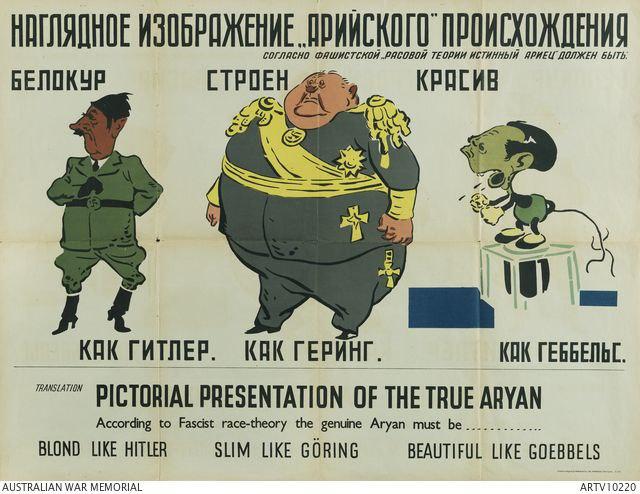
Propaganda poster ridiculing Hitler for his alleged dark hair being in contradiction with the Aryan ideal.
However we’re not trying to argue that he did all of what he did out of selfishness or self-worship, or that his Nordicism was only motivated by his own self-image. We are only striving for historical accuracy as we regularly do so regarding important historical figures. Like the Heroes of Homer, Alexander or the Roman patricians, there is no reason to soften this case when the Führer is more significant than all of the aforementioned combined.
Everyone ought to know the truth because the lies have been repeated many times. Adolf Hitler deserves not only to be remembered, but to be remembered accurately, without falsification.
